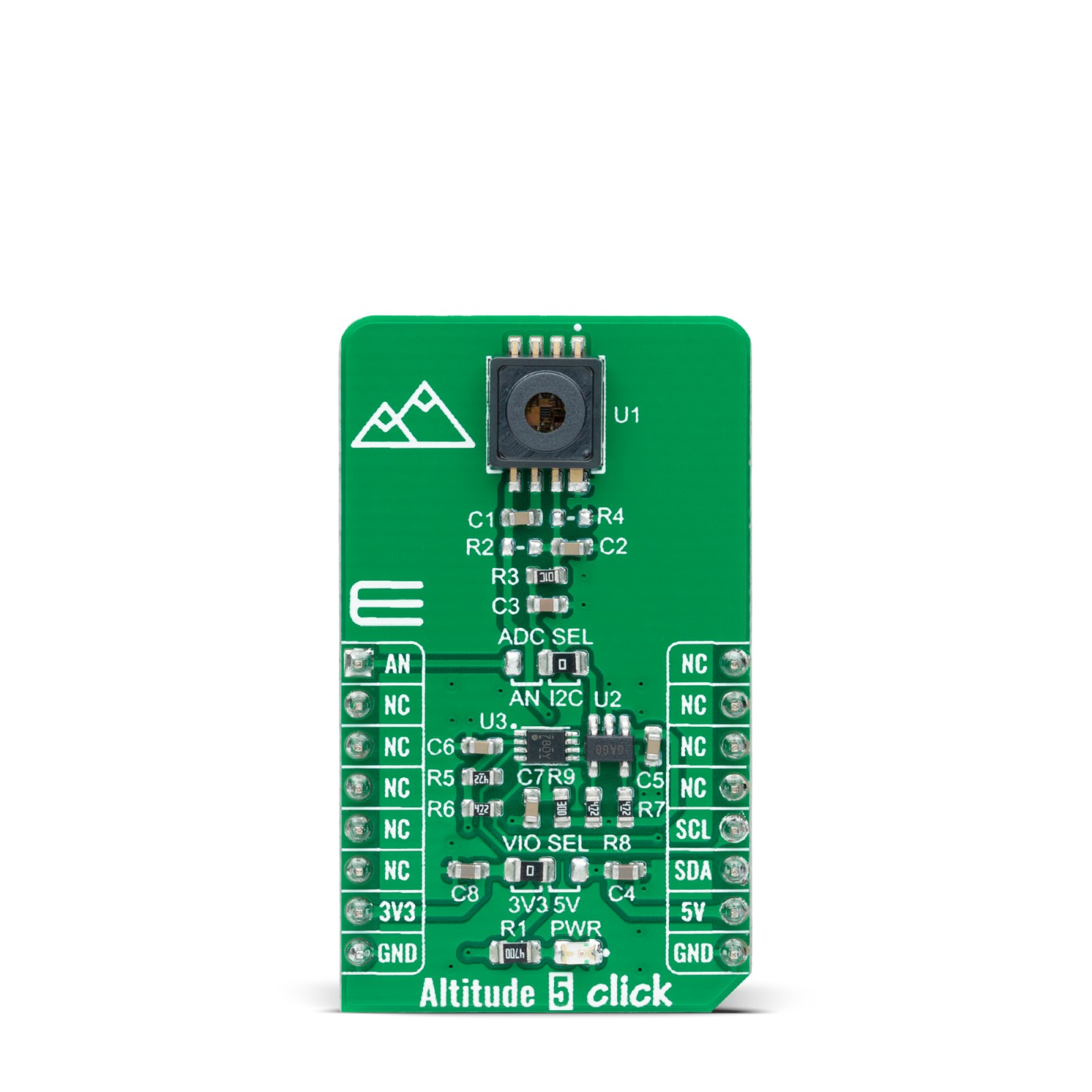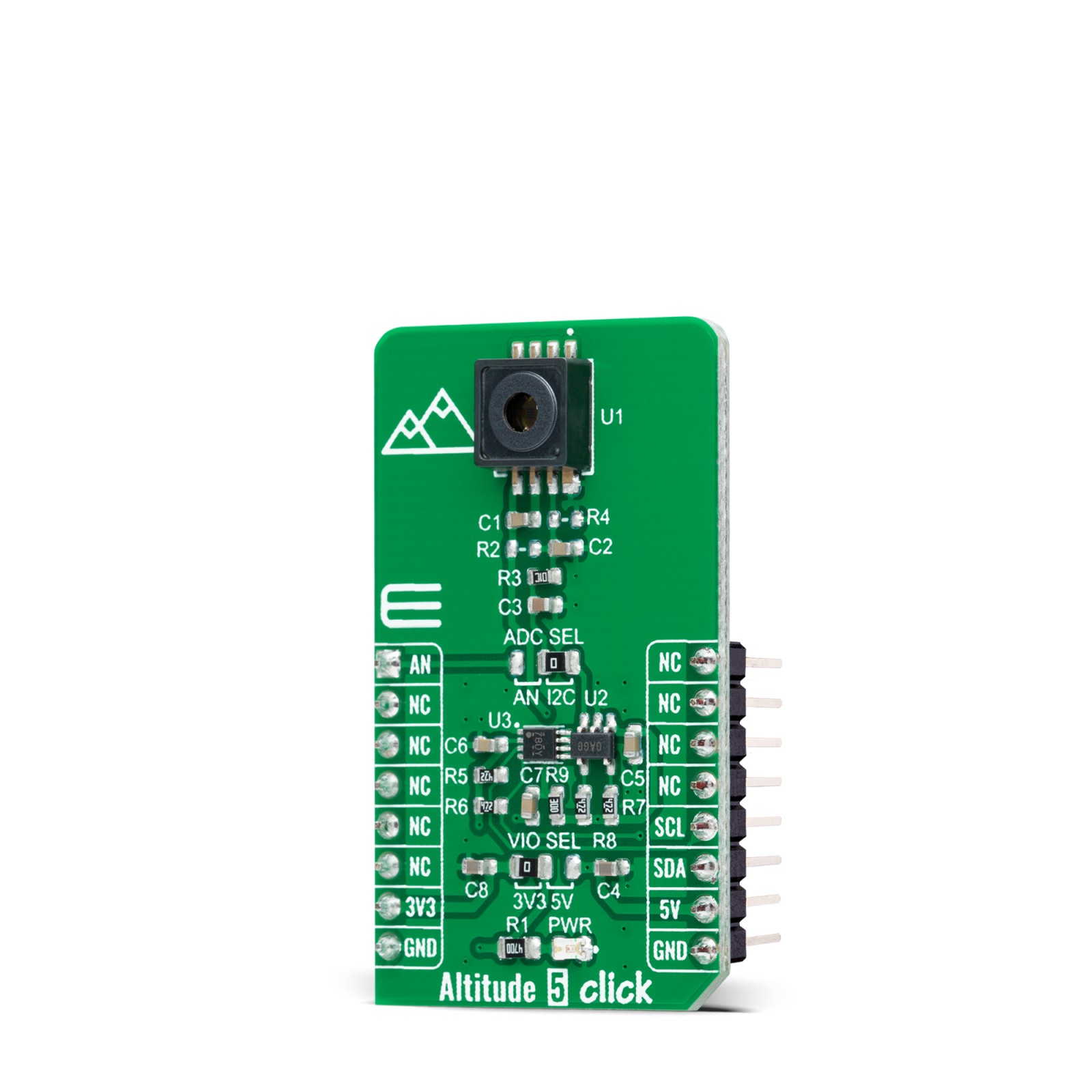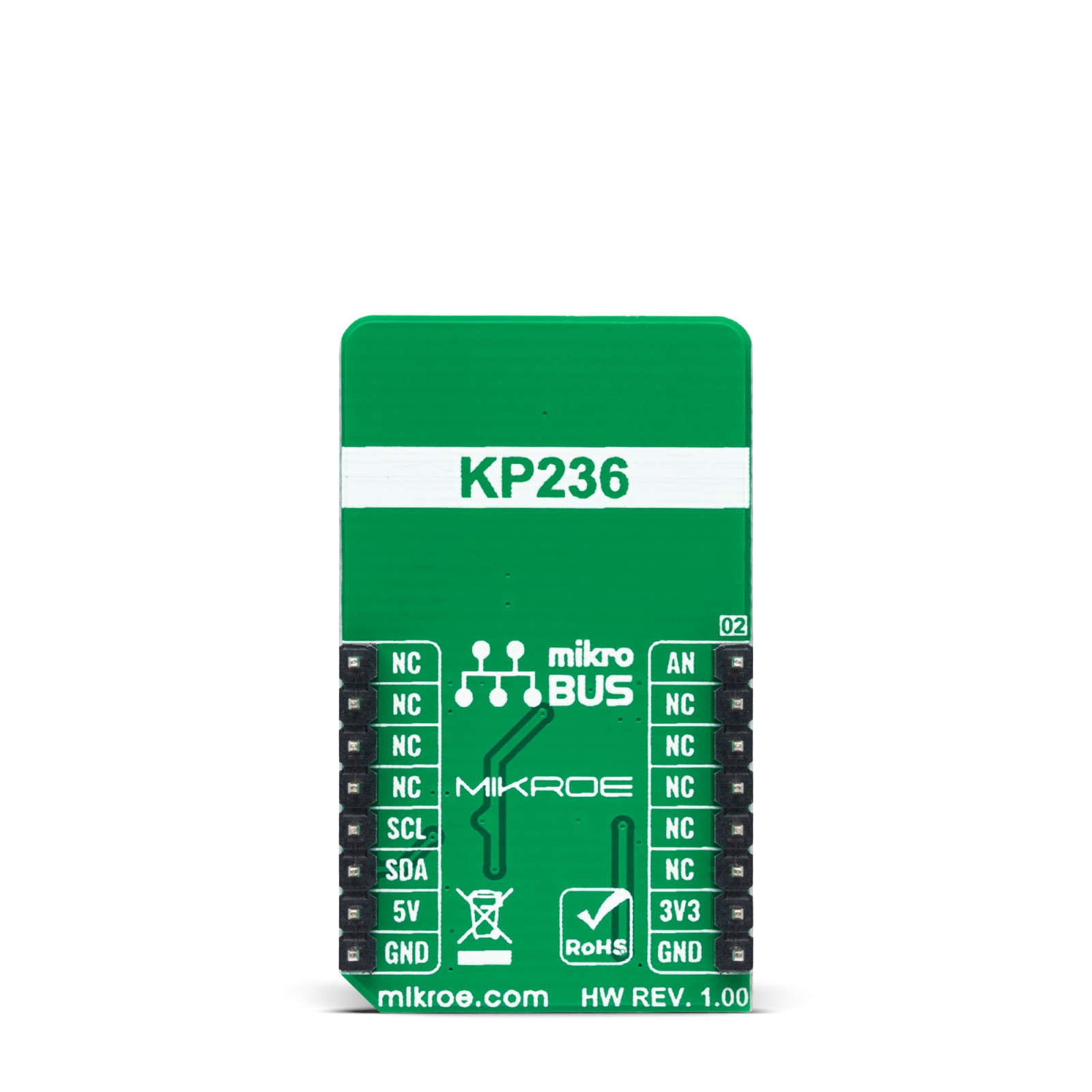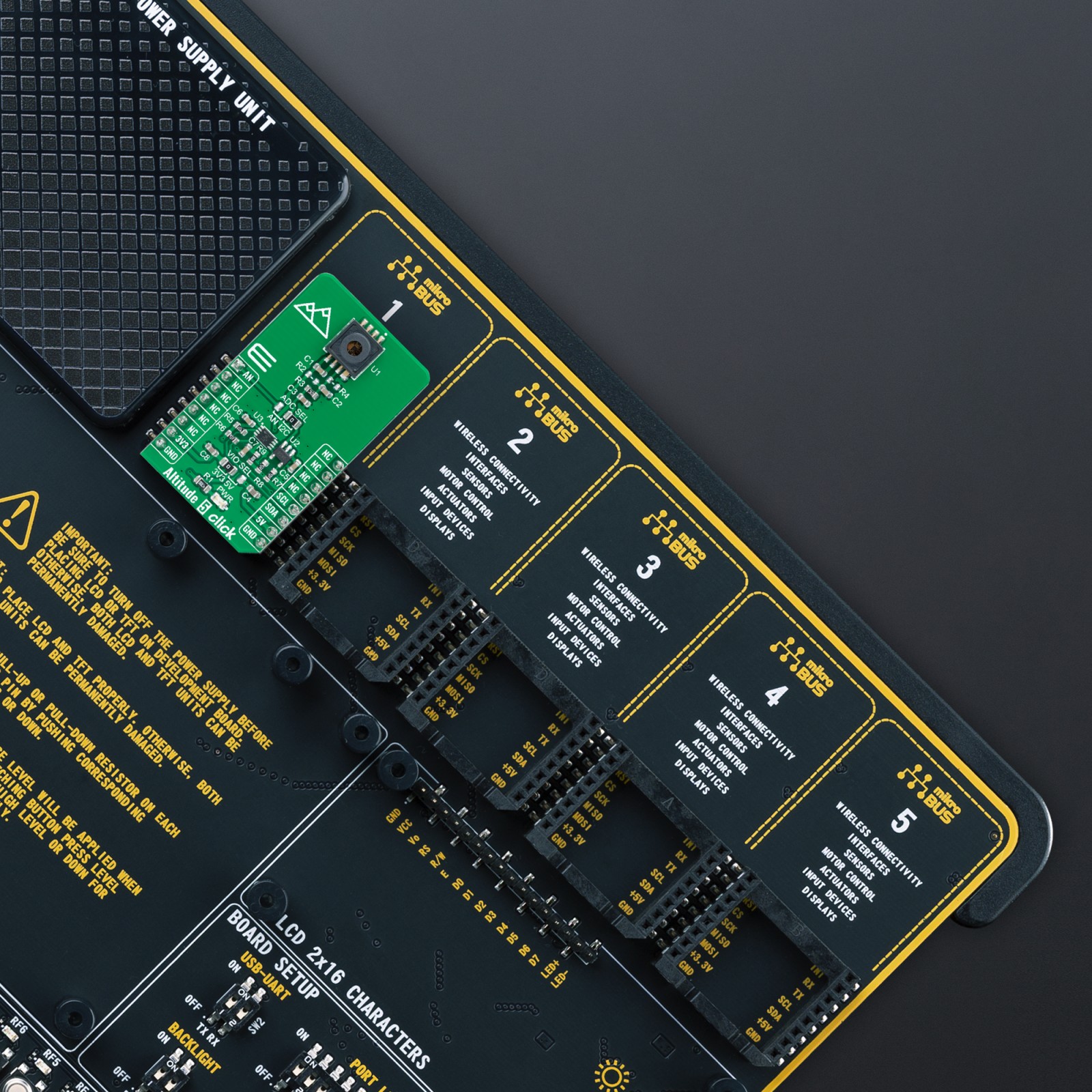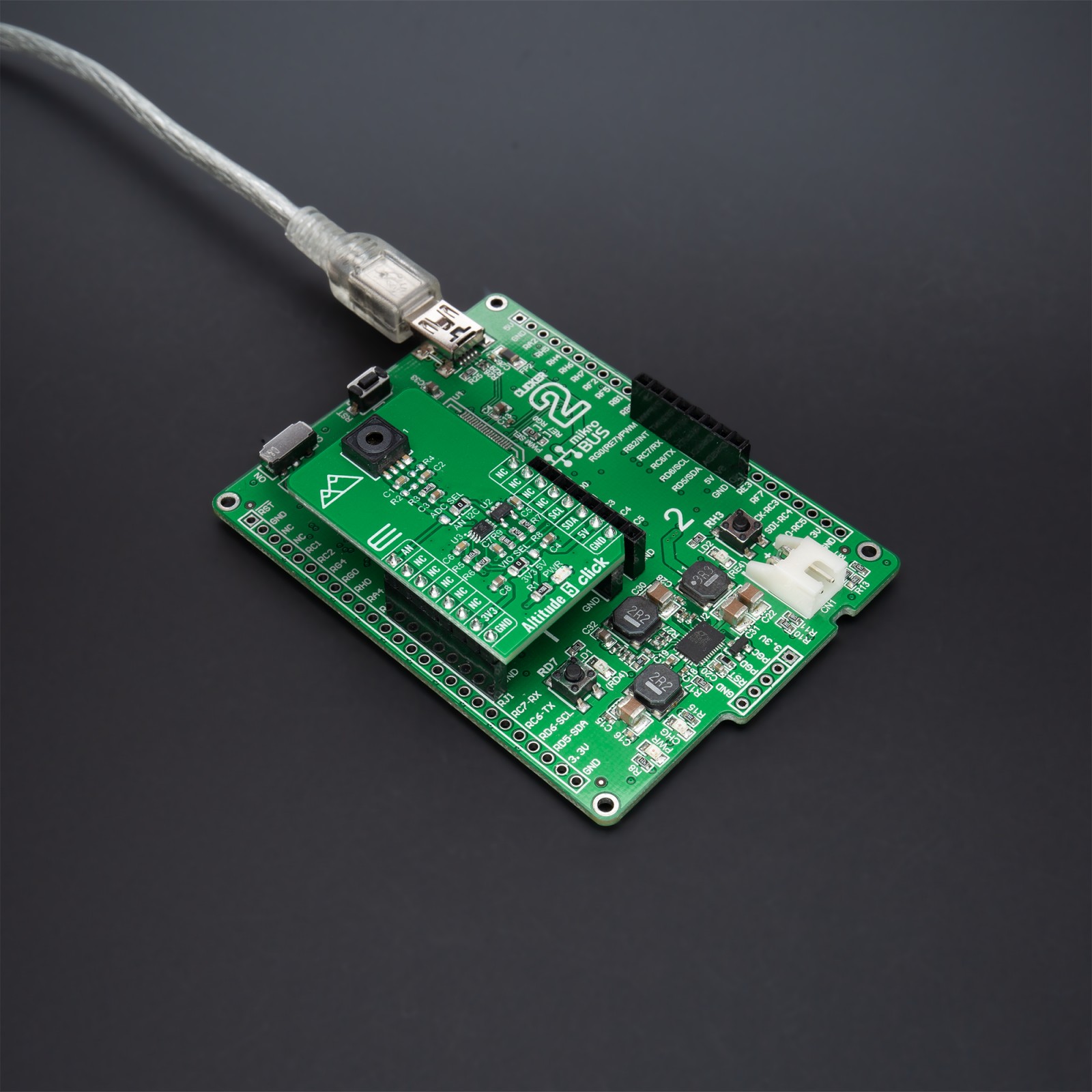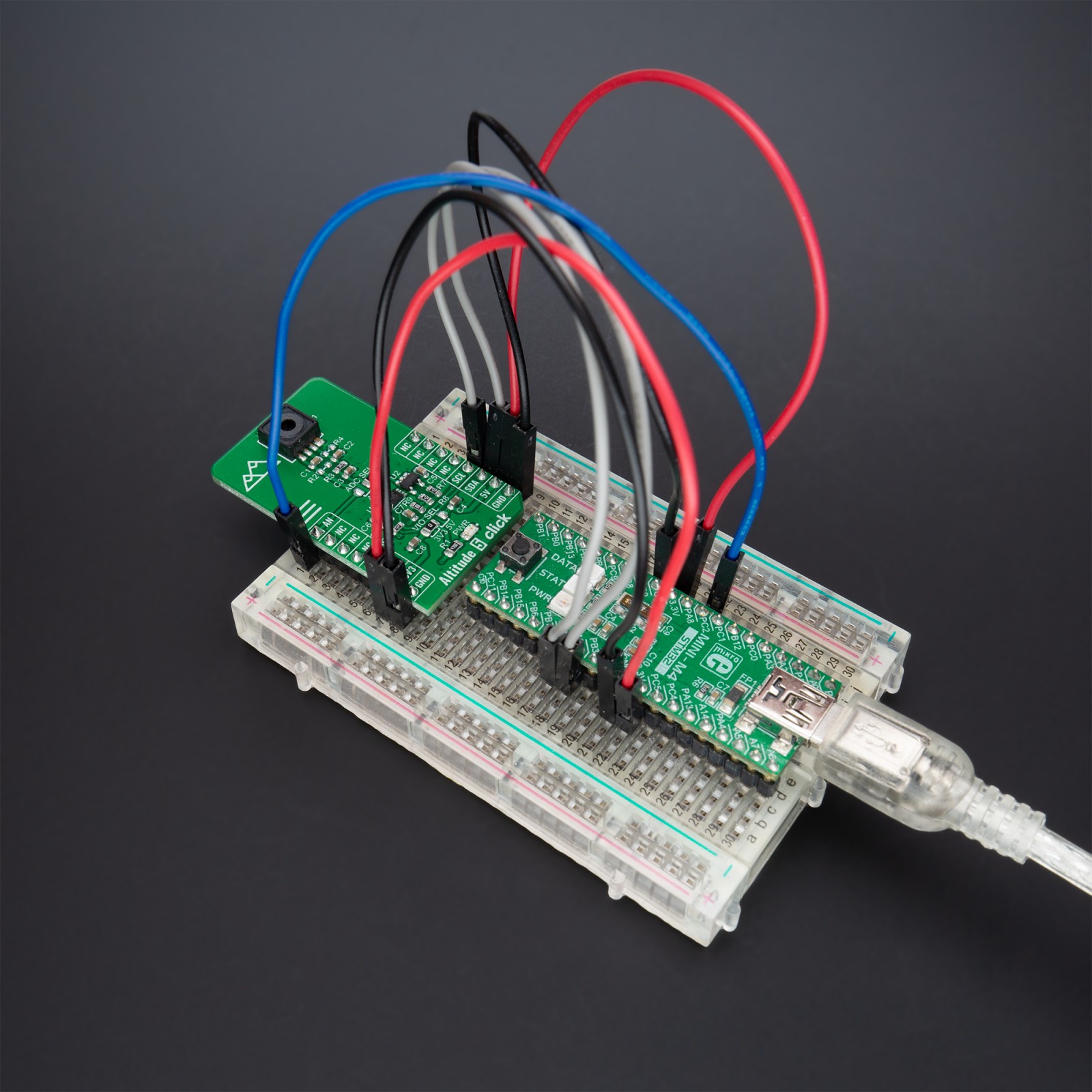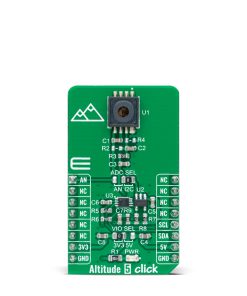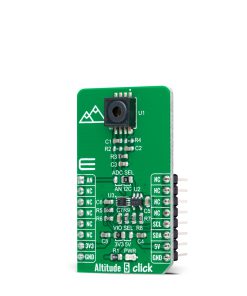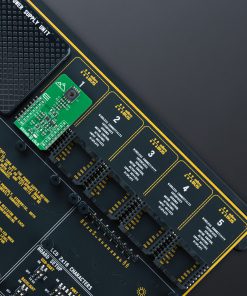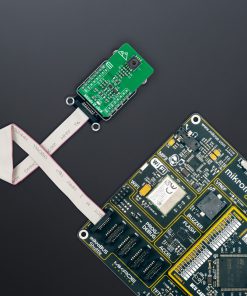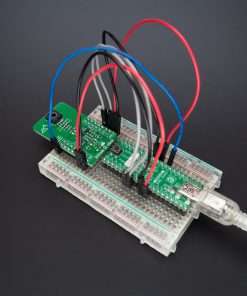Altitude 5 Click
R545.00 ex. VAT
Altitude 5 Click is a compact add-on board allowing high-resolution barometric pressure measurement. This board features the KP236, an analog barometric air pressure sensor based on a capacitive principle from Infineon Technologies. The KP236 is primarily developed for measuring barometric air pressure but can also be used in other application fields. It is surface micro-machined with a monolithic integrated signal conditioning circuit implemented in BiCMOS technology. The calibrated transfer function converts pressure into an analog output signal in a range of 40kPa to 115kPa. However, the choice of signal processing is up to the user; more precisely, the user can process the output signal in analog or digital form. The high accuracy and the high sensitivity of the KP236 make this Click board™ suitable for advanced automotive applications and industrial and consumer applications.
Altitude 5 Click is supported by a mikroSDK compliant library, which includes functions that simplify software development. This Click board™ comes as a fully tested product, ready to be used on a system equipped with the mikroBUS™ socket.
Stock: Lead-time applicable.
| 5+ | R517.75 |
| 10+ | R490.50 |
| 15+ | R463.25 |
| 20+ | R445.81 |

